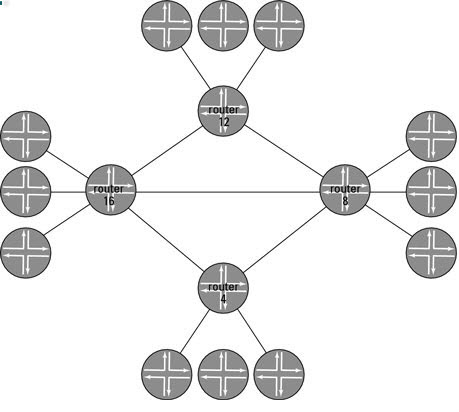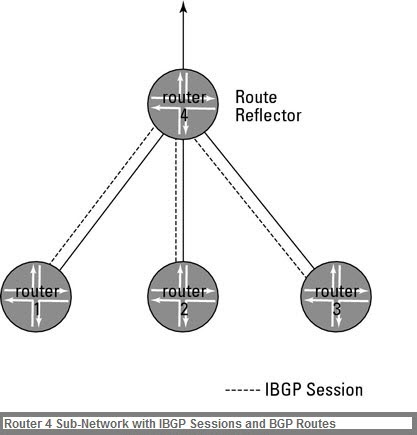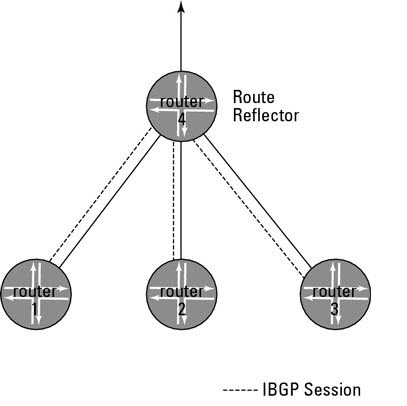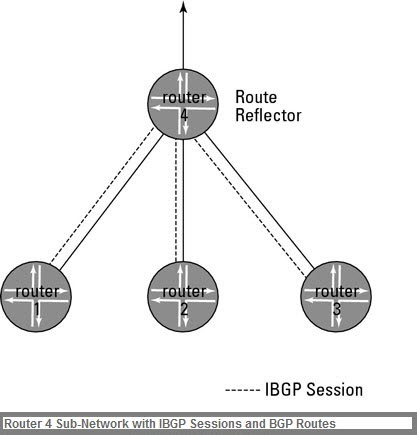Configuring Border Gateway Protocol (BGP) can be quite onerous, particularly with large numbers of peering sessions that must be configured manually. In fact, in a large network, the full-mesh requirement for IBGP can be a provisioning nightmare.
BGP’s answer to the IBGP pairing configuration nightmare that is the full mesh is called route reflection. Route reflection allows sharing of routing information among a group of routers without having to send the exact same information to each of them individually. It’s sort of like giving information to one person and having them distribute it to all their peers.
IBGP comes with a significant restriction: IBGP peers should not re-advertise IBGP-learned routes to other IBGP speakers, which is why they all need to be fully meshed. If you can’t re-advertise IBGP routes, you must be directly connected to the originator of the route, hence the full mesh requirement. Remember, IBGP has no dedicated loop prevention mechanism, and this is why you need route reflectors for large networks.
The concept of route reflection allows you to designate one or more of your routers as route reflectors. BGP relaxes the re-advertising restriction on these route reflectors, allowing them to accept and propagate IBGP routes to their clients.
Because of the IBGP full-mesh requirement, this topology would require 15 IBGP peering sessions per router, or 120 distinct IBGP sessions within the network. However, if you designate router 4 as a route reflector, you can start to minimize this requirement. For example, look at what happens in with the routers directly connected to router 4.
In this part of the topology, router 4 has three directly-connected routers. If just this part of the topology is running IBGP, you have to configure a full mesh between the 4 routers. However, if you designate router 4 as a route reflector, BGP only requires that every route reflector client have an IBGP connection to the route reflector (not to each other).
With the new configuration, the IBGP routes from routers 1, 2, and 3 are sent to the route reflector. Router 4, acting as the route reflector, re-advertises these routes to all of its clients.
In this way, router 1 and router 2 are connected via IBGP, through their shared route reflector, router 4. This group of routers is called a cluster, and each cluster is uniquely identified by its cluster ID (a 32-bit number similar to an IP address).
Looking back at the original 16-router network, if you make similar route reflectors with routers 8, 12, and 16, you can create four route reflectors and reduce the number of IBGP sessions.
The 16-router fully meshed route reflector network
However, all 16 routers are still in the same AS, which means that IBGP has to fully connect all 16 routers. How do you do this?
Ultimately, you must have connectivity somewhere. That connectivity occurs at the route reflector level. The route reflectors must be fully meshed, meaning that you must have IBGP peering sessions between each of the four route reflectors.
Essentially, you have drastically reduced the number of IBGP sessions in your network. Where you previously needed 120 sessions to fully mesh your network, you now need only three sessions from each route reflector to its clients and an additional six sessions to fully mesh the route reflectors (for a total of 18 IBGP sessions).






